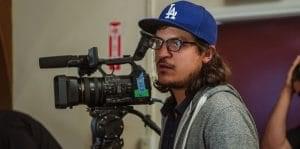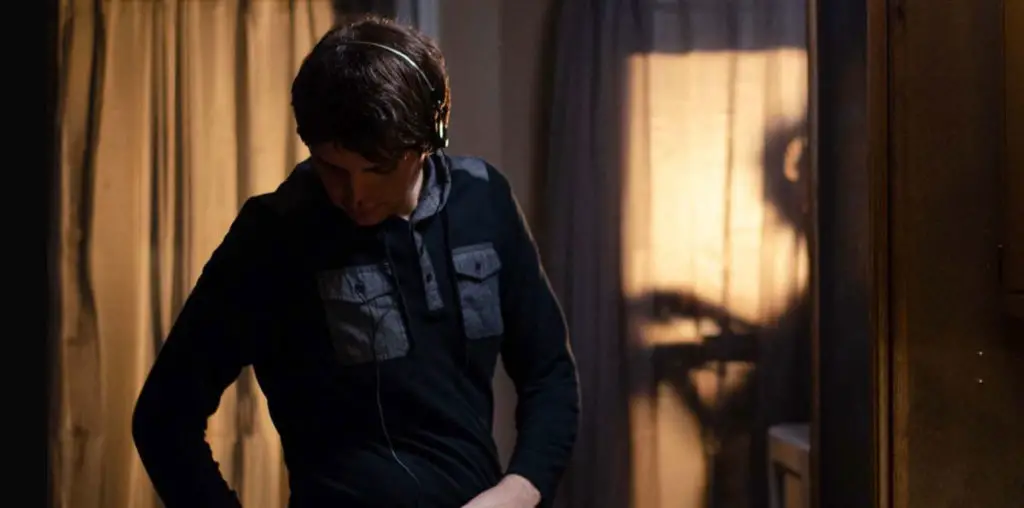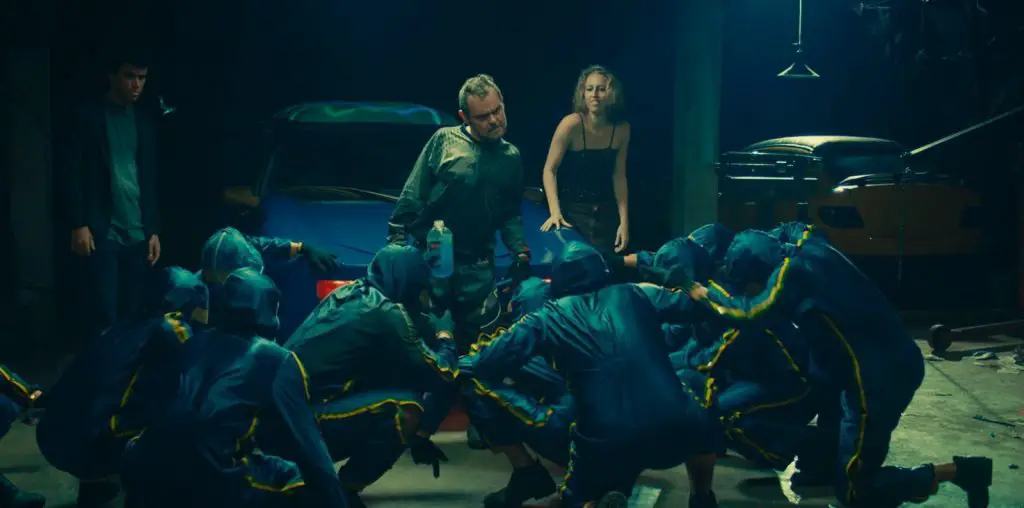
The use of our everyday devices and computer screens in storytelling is slowly emerging as a new genre of film. Whether it’s a hybrid use of traditional storytelling coupled with smartphone apps like in Wobble Palace to the sole use of images and videos taken from everyday devices and screens as seen in the Unfriended series, e-Demon, and Searching, filming these stories is more than just a series of simple screen captures. Because we’re on our devices 24/7, the final product has to feel real and every image has to feel authentic. Film Threat’s Alan Ng spoke to Searching cinematographer Juan Sebastian Baron about the film and his approach to capturing the narrative through social media and apps.
How did you get involved with Searching?
Juan Sebastian: Years ago, I was partnered up with Searching‘s writer/director Aneesh Chaganty for an intermediate project at USC. I remember getting his script the summer before; it was the most ambitious student short I had ever read…basically a blockbuster short. We were almost laughed out of our class when we presented the pitch because it seemed impossible. We were both on the same page, in that no matter how much work it took we wanted to leave our mark and we pulled it off together. I have a lot of respect for the scale of his vision and I’m very in tune to his style of storytelling. When he approached me with Searching, I immediately knew that the bar he was setting was to make a film that would screen around the world, and I think he knew that I would believe in that potential and be committed to his vision.
When you were initially presented with the project, what were your early impressions of Searching and what you could bring to it?
I was blown away with the script Aneesh and Sev wrote. It was instantly very intimidating because as a read the script sucks you into the world and the authenticity of the experience. It’s incredibly relatable because it penetrates a part of our lives that cinema hasn’t been able to explore. The first concern for me was executing it on a technical level with the complexity of all the different kinds of media. The story spans over ten years, and in today’s technological age, you need realize that, aesthetically, the differences between say 2008 and 2010 are huge. I knew I could bring a very discerning eye to figuring out how to map those changes and find a way to communicate Aneesh’s emotional style while staying very grounded. We wanted all the visual media to fit seamlessly into the story.

“We wanted all the visual media to fit seamlessly into the story…”
What were the early discussions you had with the director Aneesh Chaganty about how you would approach the film’s cinematography?
The key for us was that we approach this film exactly as we would a traditional drama. We talked about the characters, the story, and the timeline. We began to lay down ideas in terms of how we explore the characters through their space, through symbolism in lighting and color. Then we tackled the question of how we would do that, and the answer was always to try and execute it as realistically as possible. We didn’t want to cheat. Our producers gave us the luxury of having prep time with the editors as well, so from day one I understood their needs and what they wanted to accomplish as well. We didn’t use any filtering or post degradation, all of the footage was captured with cameras that gave us the desired effect. Every set up in the film was also lit with a very specific idea and concept in mind, designed to fit into the narrative exactly as it would on a traditional film.
To the average layman, it might like Searching had to be easy to film because essentially you set a fixed camera and just let it roll. What were the differences/challenges you faced compared to a traditional narrative film?
Much like a traditional film we, shot in locations that had to be designed and dressed. We had scenes in standing sets on sound stages, day exteriors, night exteriors, drone sequences, stunts, driving choreography, etc. So, in a lot of ways it was a similar set of challenges, but with the added wild card of shooting on consumer cameras (iPhones, goPros, camcorders, etc). It added a lot of unpredictability and chaos. GoPros for example have a mind of their own, and all of the iPhone footage was captured on Aneesh’s personal phone. On this film, I also had a tiny team compared to what I’m usually used to, and with over a dozen different cameras to wrangle. It stretched us very thin. On a traditional film as a cinematographer, I lean a lot on my tools; that sort of becomes a constant that allows me to focus on the story. I had to expend way more energy keeping track of charging batteries and GoPro Wi-Fi passwords than I would have liked, so ultimately that made this film feel well outside my comfort zone.
I’m sure that filming Searching was not simply performing screen captures on a Windows and Apple computer screen. What were some of the unique approaches you took to mimic everyday devices?
Adam Sidman at Bazelev’s designed a very innovative but MacGyvered system of capturing the FaceTime sequences. The challenge was we had to capture the actors speaking to each other with as little latency as possible while still allowing Aneesh and his team the ability to monitor playback like in a traditional production. It was a whole system of wires and switchers that fed back a very pixelated and monochromatic feed that the actors could use to work off. The film was pre-visualized using Screen Capture, but ultimately everything in the film had to be designed from scratch using vector graphics to facilitate all the scaling the editors needed to do to tell the story in post-production. This meant that every piece of media in the film had to be generated or acquired by us, which meant that on top of capturing the story, during production we had to run around and take hundreds of photos that would serve as anything from stock photos, to video thumbnails, profile pictures, etc.

“I learned the power of allowing the actors to take hold of the camera…”
Were there any adjustments on the part of the actors that had to be taken compared to a traditional shoot?
From a technical standpoint the conditions on this film were extremely different from what an actor normally is used to. One component of our technique was that a lot of times the actors had to face their own image on the devices we were capturing (for example recording a selfie video on an iPhone means you are looking at yourself). This meant a lot of times we had to cover that image with tape because of how distracting it became. The level of imagination needed to do a film like this is also similar to a green screen production, because most of the time our actors weren’t reacting to live screens. For the FaceTime sequences for example, they were looking at bare screens with a small window of the other actor that was often not exactly where it needed to be. They had to imagine every action that would be happening on the real screen, and Aneesh had to walk them through every action carefully, making sure they understood what eventually would be seen in the final version.
Can you talk about the post-production process? Am I mistaken in thinking that there was a heavy use of animation to simulate the computer desktop that had to be blended with the live action?
Initially, we were mandated to make a film that took place on a wide shot of the entire desktop. However, Aneesh had been working at Google at the time where they made a lot of very dynamic commercials based on screens and devices. So early in pre-production, we spent time with the editors figuring out what the language of our storytelling was going to be, like how. What a close up would mean punching into the screen. There’s also a certain coldness and whiteness to a computer screen; one of the big tool sets of cinematography is guiding the audience’s eyes, so we explored a lot of techniques that ended up in the final film like adding vignetting and slight camera shake to the screen capture. Ultimately there was a whole layer of cinematography that was executed by the editors, Nick Johnson and Will Merrick, as they designed the experience the audience would have watching the screen content of this film.

“…my job was to disappear. If it looked like someone shot this, then it would have been a failure…”
What was your proudest achievement in making Searching?
Ultimately, what I’m always most proud of on any film is seeing through a lot of the ideas and concepts we had during pre-production and feeling the audience respond to the emotions of the story in the way the director intended. For me, my job isn’t to make a movie look good, but to use the techniques of cinematography to guide the audience through a story. In this movie, my job was to disappear. If it looked like someone shot this, then it would have been a failure. However, there are moments in the film, like when David is at his lowest point in his search, that subtle effects in lighting and contrast really accentuate his performance, and seeing the combination on screen as a collaboration between every department is very satisfying.
What piece of advice would you give to emerging cinematographers that you learned specifically during Searching’s production?
As cinematographers, we carry a lot of responsibility, and pressure. Ultimately, the final product rests in our hands. I think the response sometimes is to try to exercise control. One lesson we learn early on in our career is how easily decisions like which location to shoot in can negatively affect our work. I think the biggest lesson from this film, given how different of an experience it was from a traditional movie, was learning when to speak up and also when to take a step back and allow the process to happen. Especially when it came to camera operating on this film, I learned the power of allowing the actors to take hold of the camera, how much dimension we could add to the film by giving up that control and letting their performance become part of the camerawork. I think it’s important to understand that cinematography doesn’t always mean doing a ton of lighting or camera movement. The right contribution can be as simple as exploring which direction to shoot in, or even just what camera height is appropriate for a shot.
Film Threat previously spoke with Searching‘s director and writer Aneesh Chaganty and Sev Ohanian at the 2018 Los Angeles Asian Pacific Film Festival, read that interview here.


